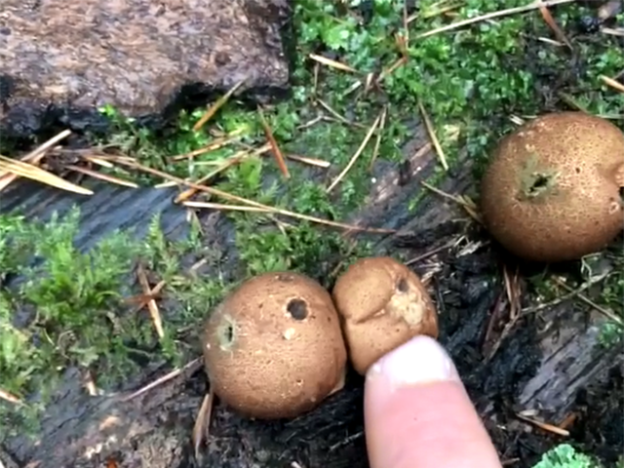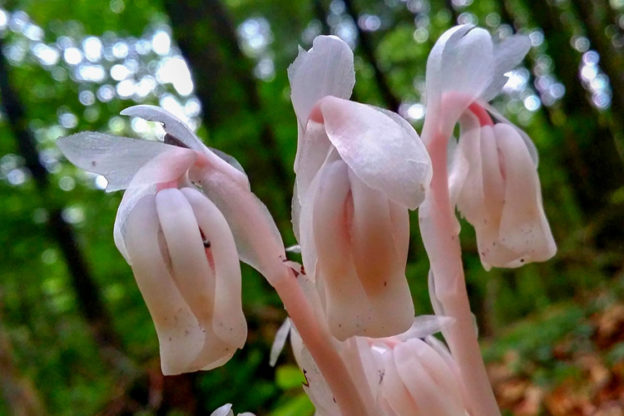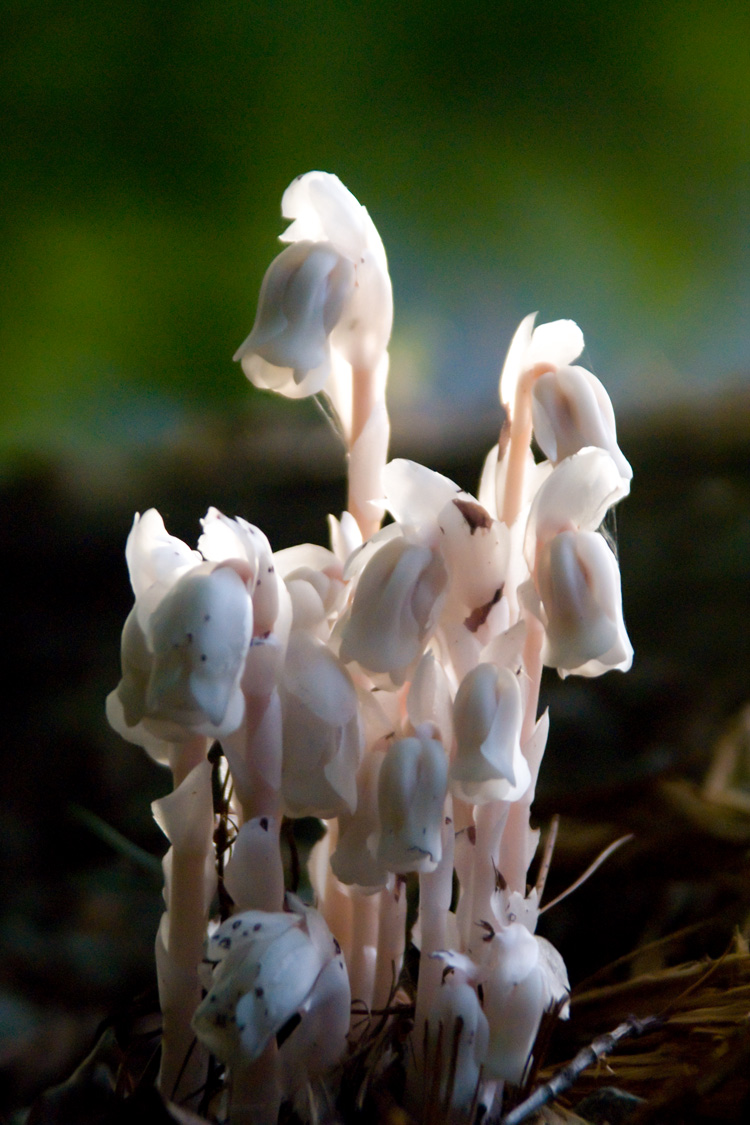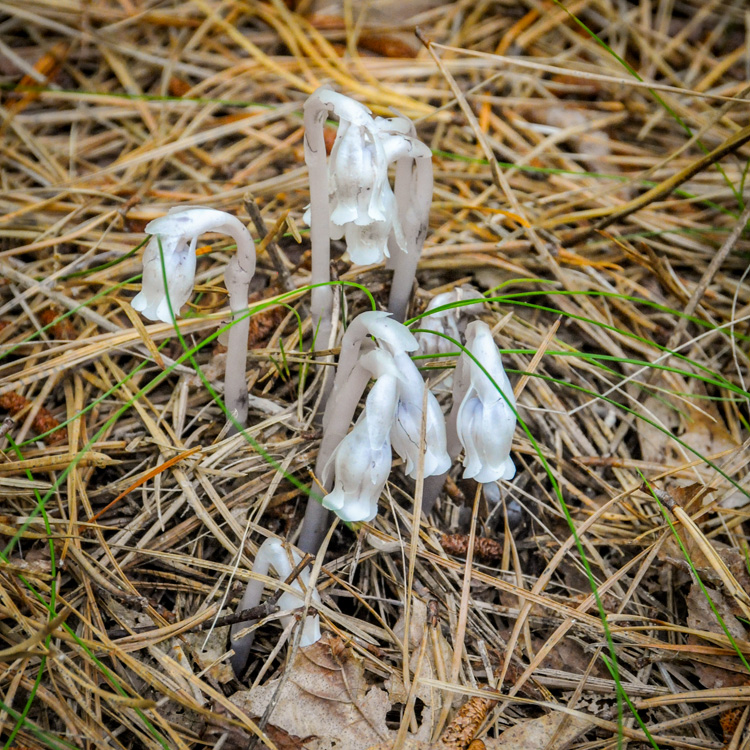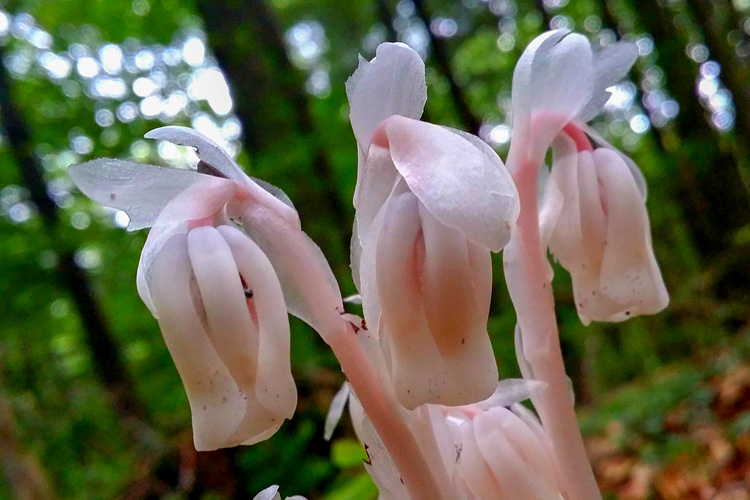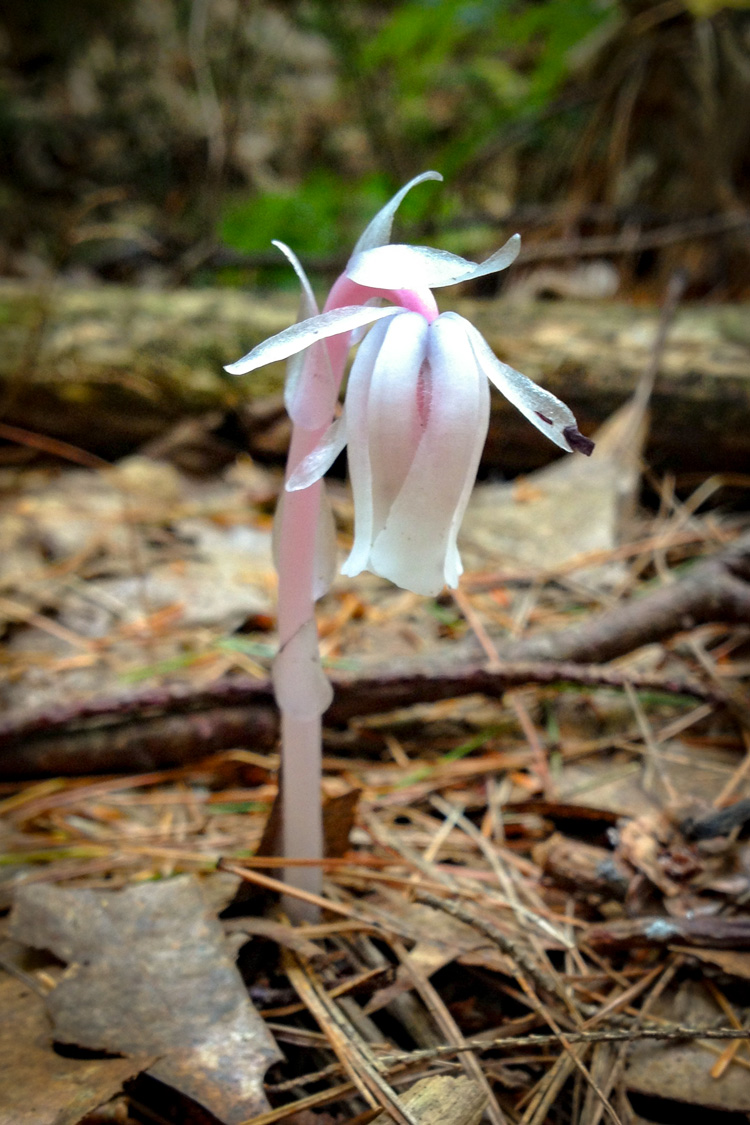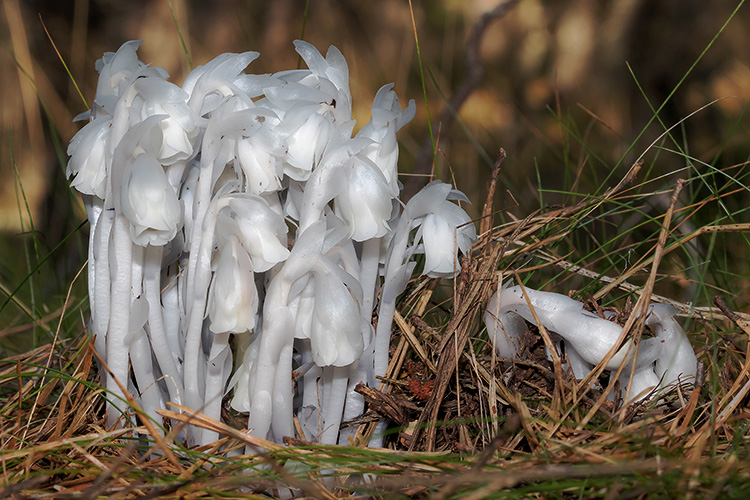When this video clip was posted to social media by one of our TerraCorps members, it was received with mixed reactions. Responses ranged from “so cool!” to “that’s definitely a trap and releasing poison.” Most people just wanted to know “what is coming out of them?” and “is that a type of fungi?” and “DOES IT SMELL?”
These alien-looking pods are actually a type of mushroom called Lycoperdon pyriforme or “stump puffball.” The name is not misleading –- stump puffballs grow on dead or decaying tree stumps in large clusters of dozens or sometimes hundreds.
Stump puffballs start out as regular-looking mushrooms but in the fall and early winter they transform into hollow, spore-filled air sacs. The green “dust” you see in the video are millions of tiny spores exploding out of a small hole in the mushroom top.
Aside from being poked and prodded by curious humans, these spores are released by natural forces like rain or animals.
The word pyriforme is Greek for “pear-shaped.” However, the origin of Lycoperdon is debated among researchers. Some believe Lyco comes from lýkos meaning wolf and pérdomai meaning “break wind,” aka the “wolf-fart” mushroom. Others believe it was incorrectly translated from its original Leuco-perdon meaning white puff.
Regardless of the Greek roots, the “wolf-fart,” nickname is a misnomer. These spores do not actually smell. However, you certainly do not want to inhale them as it could cause respiratory problems.
Have you ever encountered Lycoperdon pyriforme? We’d love to hear about your stump puffball finds in the comments below!
— Kaleigh Keohane


